Android comprises an entire ecosystem of apps, games, functions, and features, so it would only make sense that it has its own lexicon. Words, phrases, and acronyms that didn't exist ten years ago are now used in an off-the-cuff style by developers and support technicians across the web.
As the platform matures, this list of unique Android words continues to evolve, which makes it hard to stay on top of the latest terminology. But breaking things down into simple terms is what we do best here at Gadget Hacks, so below, we'll cover all of the latest Android lingo in layman's terms.
If you're looking to define a specific term, use the "Find" function in your browser (Ctrl + F or Command + F) to jump right to it. Bold italicized links will take you directly to that word's definition within this very page.
Activity
A screen or menu within an app that can be called on specifically. Use an app like Tasker or Activity Launcher to open an activity directly.
ADB
Short for "Android Debug Bridge." Software that bridges the gap between your Android device and a computer, allowing you to send high-level commands to your phone or tablet over a USB data cable.
- See Also: How to Install ADB on Any Computer
Always-on Display
A minimalistic screen that shows up when your phone is locked, serving as a quick way to see the time, weather, and pending notifications without having to wake the device. This feature, commonly referred to as "AOD," typically requires an OLED display since the black background doesn't use power and only the white lettering will consume battery on these types of screens. Also called "Ambient Display" or "Active Display," depending on the OEM.
AMOLED
Short for "active-matrix organic light-emitting diode." A marketing term used by Samsung to describe their OLED panels.
Android
The world's most popular operating system for any platform, even eclipsing Windows in market share. An open-source platform that is currently developed by Google, but was originally derived from Linux as a touch-oriented fork of the popular desktop operating system.
AOSP
Short for "Android Open Source Project." The base of Android as a whole, which is used by manufacturers and independent developers to create the firmware an Android device runs on. Used colloquially to refer to an unmodified version of Android in some cases (see Stock Android below).
API
Short for "application program interface." As it pertains to Android, an API is a set of tools available to apps that will allow the third-party software to access system-level functions. As an example, Camera2 API allows apps you download from the Google Play Store to access the full capabilities of your phone's camera hardware.
APK
Short for "Android application package." The extension used in Android app installation files (e.g., app.apk). Similar in nature to an EXE file on Windows.
App
Short for "application." A software program, generally developed for a mobile platform, that can be used to perform any number of tasks.
App Standby
A battery-saving feature introduced with Android 6.0 Marshmallow that forces unused apps into a hibernation mode. When you have an app installed but don't use it for a long period of time, Android will prevent the app from syncing in the background or holding a wakelock until you launch the app again.
ARCore
Android's built-in framework for augmented reality apps and features. The full ARCore suite consists of a software development kit (SDK), an API, and an app that updates these tools on the device through the Google Play Store. ARCore is currently only available to select high-end flagships, but the supported devices list is always expanding.
ARM
Originally known as "Acorn RISC Machine," (reduced instruction set computer), then "Advanced RISC Machine," ARM is an instruction set architecture for processors. Architectures lay out all of the hardware-level coding ("instruction sets") that software developers will need to interact with the device — think of these like a bridge between hardware and software. ARM was the most common architecture used by early Android SoCs, as it was more power-efficient than x86, however, today's most common architecture is now ARM64.
ARM64
A newer iteration of the ARM instruction set architecture designed for modern 64-bit mobile SoCs.
ART
Short for "Android Runtime." Android's new virtual machine library that replaces the older Dalvik. ART enables the same applications to run on vastly different hardware by acting as a go-between.
Augmented Reality
Commonly referred to as "AR," augmented reality is software that overlays digital creations on top of real-world scenes. With Android, AR apps typically use the camera to display the real-world scene, then augment the view with software features such as interactive objects. Android's ARCore framework allows app developers to access the built-in plane detection features in order to accurately portray the scene.
Baseband
In mobile communications, a baseband is the initial frequency of a signal before it's modulated (converted). A baseband signal could originate as something in the audible frequency range, but as it's transmitted, it would be modulated up to a higher, non-audible frequency before being down-converted to the baseband frequency again on the target device.
As it pertains to Android, however, this term is more commonly used in reference to the "Baseband version" entry in Settings –> About Phone. This refers to the firmware that controls all radio signals on the device, such as Bluetooth, GPS, mobile data, NFC, and Wi-Fi.
Bezel
With smartphones, the bezel is the area of the front face of the phone that isn't occupied by the screen. The top bezel is colloquially known as the forehead and sometimes contains a notch, while the bottom bezel is referred to as the chin. Reducing the size of bezels all around led to a trend of all-screen phones in 2018.
Biometrics
As it pertains to Android, biometrics are body-based authentication methods. For example, a phone can scan your fingerprint, face, or iris to verify your identity before allowing access. Typically, biometrics are used on the lock screen in addition to a pattern or PIN, though they can also be used to authenticate in-app purchases.
Bloatware
Term used in reference to generally unwanted apps that come pre-installed on an Android device by its manufacturer or carrier. Our in-house definition is "A duplicate app that performs the same functionality as another pre-installed app, or an app that the OEM was paid to install on the device." Bloatware typically cannot be uninstalled, so it occupies space, thus "bloating" the device's software.
Bluetooth
A type of wireless connectivity for battery-powered devices that allows for data transfer at speeds of up to 24 Mbps over a theoretical range of up to 100 meters. Used commonly to connect accessories like headphones and speakers to an Android device.
- See Also: How to Connect to a Bluetooth Device
Bootloader
The software that launches Android and its ancillary services when you power on your device. Also provides an interface for sending fastboot commands over a USB computer connection.
Bootloop
An error that occurs when software has become corrupt and your device immediately restarts when attempting to boot into Android, then repeats this process infinitely. Similar to a soft brick (see bricked entry below).
Bricked
A device whose software has been compromised (generally by the user) to the point where it will not boot into Android, rendering it as useless as a paperweight or brick. The term hard bricked is used to refer to a device in such a state as a result of failed hardware, while the term soft bricked generally denotes a software failure that can potentially be fixed.
Build.prop
A text file located in Android's system folder which contains many lines of code that determine several settings for the device. Editing these lines of code can remove restrictions, give users access to new features, change display density, or even boost performance—but root access is required in order to modify the file.
Burn-In
More accurately described as differential aging, burn-in is the colloquial term for what happens when a static image is constantly displayed on certain types of screens (typically OLEDs). The elements that were displayed for prolonged periods will sometimes remain visible on the screen when viewing other content. See the differential aging definition below for the cause of this issue.
BusyBox
A set of specialized commands or tools that can be installed on a rooted device to give certain apps more functionality. Generally, a BusyBox installer app is used to add the commands to a rooted device.
- See Also: How to Install BusyBox Commands
Camera2 API
An API that allows third-party apps to access your camera hardware in ways that previously were only possible with the stock Camera app. Debuting in 2014 with Android Lollipop, Camera2 API allows camera apps like Instagram to control exposure, shutter speed, focus, and more.
Carrier
The service provider for calls, mobile data, SMS or MMS, and other communication resources that are used by a mobile phone or tablet. North American carriers include AT&T, Bell, Sprint, T-Mobile, Telus, and Verizon Wireless.
Cast
Used as a verb to describe the act of sending media from a mobile device over to a television or larger screen. Generally used in reference to Google's Chromecast, but can also be used to describe this act with regards to DLNA, Miracast, or other similar technologies.
- See Also: All of Our Chromecast Coverage
CDMA
Short for "code division multiple access." A mobile voice and data communications standard used by cellular carriers such as Sprint and Verizon. A competing standard to GSM.
Chin
The portion of the front face of a phone beneath the display. The chin and forehead of a phone, combined with the side bezels and notch (if applicable), are the only portions of a phone's face that aren't occupied by screen.
ClockworkMod
Abbreviated CWM, ClockworkMod was one of the first custom recoveries to be made available for a wide array of Android devices. Like all custom recoveries, ClockworkMod can be used to perform NANDroid backups, apply third-party modifications to Android, or install a custom ROM.
Command Line
A text-based interface for executing tasks. Also referred to as "Command Prompt," "Terminal," or "Shell." Command line interfaces are commonly used with Android to remotely execute ADB or Fastboot commands from a connected computer, or with a terminal emulator app within Android.
Cupcake
The code name for the first public version of Android (1.5). Released on April 27, 2009.
Custom Launcher
See Launcher below.
Custom Recovery
Third-party software that replaces the stock Android recovery menu, adding the ability to install modification packages (flashable ZIPs), create NANDroid backups, and install custom ROMs.
Custom ROM
A version of Android made by independent developers to replace the existing operating system on a phone or tablet. Normally installed through custom recovery, and generally includes several optimizations, as well as extra features.
CVE
Short for "common vulnerabilities and exposures," these are publicly-known security issues within an operating system (OS). All OSes have CVEs, and Google is constantly fixing these with security patches to keep Android safe from external threats like hackers.
CyanogenMod
Also Cyanogen, CM, CM 12.1, etc. One of the first Android custom ROMs to include support for a wide range of devices. Based on AOSP, CyanogenMod included several additional features and tweaking options. This project has since been abandoned and replaced with LineageOS.
DAC
Short for "digital-to-analog converter," this piece of hardware changes the phone's audio output from its digital origins to an analog signal that can be used by standard headphones and speakers. A higher-quality DAC will result in better audio performance.
Dalvik
The virtual machine library used from Android Cupcake to Android KitKat . Dalvik was deprecated in favor of ART in 2014.
Differential Aging
Colloquially referred to as burn-in, this is a condition that occurs when a static image is constantly displayed on OLED screens. As the phone is used, the pixels within its screen slowly lose luminance, resulting in a less vibrant display. However, if parts of the screen remain black while the other portions naturally age, these parts will look more vibrant than the rest. The end result is an effect that makes it appear as though non-black portions of the screen have been etched into the display, hence the burn-in misnomer.
Donut
The code name for Android version 1.6. Initially released on September 15, 2009.
Doze Mode
A battery saving feature introduced in Android 6.0 Marshmallow that prevents apps from disrupting a device's low-power deep sleep cycle. After Android has detected that the device has been laying flat and motionless for a period of time (sitting on a table, for instance), Doze Mode kicks in and ensures that no nonessential apps request a wakelock or sync in the background, which would otherwise drain the battery in a situation where the user is obviously not actively using their device.
Driver Binaries
Hardware-level code that lets software interact with the various pieces of a phone, such as the display, radios, and touch screen. If a phone has its driver binaries publicly published, it becomes easier for third-party developers to create custom ROMs.
Droid
Verizon's marketing term for its line of Android devices, generally manufactured by Motorola. The term is not synonymous with Android, though it is mistakenly used this way quite a bit.
Dual SIM
Support for more than one SIM in the same phone, typically used for adding two phone numbers to a device or splitting phone service and cellular data across two carrier plans. Traditionally, dual SIM has meant support for two physical SIM cards, but newer phones allow the usage of one physical SIM and one eSIM.
Eclair
The code name for Android versions 2.0 through 2.1. Initially released on October 26, 2009.
Emulator
Software that lets an operating system run non-native apps or games from another operating system. Most commonly, Android emulators are used to play console games or ROMs from Nintendo, PlayStation, and others.
- See Also: The Best Emulator Apps for Android
Encryption
The process of encoding a file in a way that makes it unreadable without a special decoder key. Internal storage is encrypted by default on all modern Android phones, so if an outside attacker removed the storage drive and tried to read it, all of the files it contained would appear as gibberish without the decryption key. For the end user, decrypting storage is as simple as entering your lock screen password, PIN, pattern, or scanning your biometrics. Android devices use one of two encryption methods: full disk encryption (FDE) or file-based encryption (FBE).
eSIM
Short for "embedded SIM" or "embedded subscriber identification module." Incorrectly referred to as "electronic SIM" by some, this is a chip built into a smartphone that can be programmed to function as a virtual SIM card.
Factory Reset
To return a device's software to its initial state by deleting user settings and files. A factory reset can be performed in custom recovery or through Android's Settings menu.
Fastboot
A protocol used for sending commands from a computer to an Android device over a USB data connection while the device is in bootloader mode. Fastboot is generally used to manually install firmware or to install a custom recovery.
Fast Charging
A capability of some phones that allows the battery to be charged in less time than a standard charger. Typically, this is accomplished by increasing the voltage and/or amperage of the charging system to increase the peak wattage, though other safety measures are required to reduce the chances of battery overheating. Select fast charging standards include Qualcomm's QuickCharge and the open standard, USB Power Delivery.
File-Based Encryption
An encryption method that allows individual files on a drive or partition to be encrypted using separate keys for each file. Abbreviated as "FBE," Android 7.0 Nougat added support for this feature. Also see full disk encryption below.
Firmware
The base-level software installed on a device, up to and including the operating system. "Factory firmware" is used to describe the software that comes pre-installed on Android devices before any apps or modifications are added.
Flagship
The highest-end device made by a manufacturer (or OEM) in a release cycle or year, generally the most expensive devices sold by a particular manufacturer. Popular flagship Android devices include Samsung's Galaxy S series, LG's G series, HTC's One series, Motorola's Moto X series, Google's Pixel series, and Sony's Xperia Z series.
Flash
To install a custom ROM or flashable ZIP through custom recovery, or to install a factory operating system image using either Fastboot or Odin.
Force-Close
A term used to refer to an app suddenly closing, either as a result of a bug, or the user intentionally stopping the app through Android's "App Info" menu. Often abbreviated as "FC."
Forehead
The portion of the front face of a phone above the display, excluding the notch. The forehead combined with the chin, side bezels, notch (if applicable), and screen make up the entire front face of the phone.
Froyo
The code name for Android versions 2.2 through 2.2.3. Initially released on May 20, 2010.
Full Disk Encryption
One of the two primary methods of encrypting files, the other being file-based encryption. Abbreviated as "FDE," this method encrypts the entire storage drive or partition, then the drive is fully decrypted when the user enters their password.
Galaxy
Samsung's name for its line of Android smartphones and tablets. Popularized by the Galaxy S series of flagship phones that have been the highest-selling Android smartphones to date. Similar to Droid, many people mistakenly conflate the name "Galaxy" with "Android" as a result of marketing.
Geotag
A piece of information embedded into common media files that displays geographical location data. Geotags are generally included as metadata in pictures, video, and even SMS messages, and will usually contain GPS coordinates that describe where the file was created.
Gingerbread
The code name for Android versions 2.3 through 2.3.7. Initially released on December 6, 2010.
Google Assistant
Google's AI-powered virtual assistant, baked into every Google-certified Android device that runs Lollipop or higher. The Google Assistant can be accessed by long-pressing your home button (or squeezing the sides of your phone on select devices), where you can then use your voice to get quick answers to any question or perform a number of tasks like booking an Uber or adding a calendar event.
Google Feed
The common name for what is now being called "Google Discover" officially. The leftmost page on the home screen of many Android devices, which uses data culled from your Google account to give you relevant information. Tracing its roots to the old Google Now, the Google Feed has been split into two sections recently: one which is mainly comprised of news stories, and another that shows personal information like transit times and upcoming shipments. The Google Feed is also accessible through the Google app, the Google Assistant, and on Google's mobile site.
Google Now
A service that debuted with Android Jelly Bean that used information gleaned from various sources throughout Android to predict the information users will want to see at a given time. Google Now has since been deprecated in favor of the Google Assistant and the Google Feed.
Google Play Store
Android's primary app store, where users can download and install software such as apps and games. The Google Play Store is also home to additional content, including movies, books, music, and TV shows. Generally referred to as simply "Play Store" or "Google Play."
GPS
Short for "Global Positioning System." A technology used in smartphones and navigational aides that uses a network of satellites to pinpoint a device's location.
GSM
Short for "Global System for Mobile Communications." A mobile voice and data communications standard used by the vast majority of cellular carriers, generally distinguished from CDMA by its usage of SIM cards.
Hard Brick
When a device is in a state where it will not boot into Android, typically as a result of hardware failure. If you have a hard-bricked phone on your hands, there's rarely a way to fix it yourself. By contrast, a soft brick can be recovered from if you restore the factory firmware using fastboot or Odin.
Hard Reboot
Also referred to as a "hard reset." The act of pressing and holding the power button (or power and volume down on Samsung devices) to force a device to reboot when its software is misbehaving.
HDR
Short for "high dynamic range." HDR comes into play with two common areas in Android: photography and displays. When a phone has an HDR or HDR+ mode in its camera app, it can capture photos similarly to how the human eye sees the scene, so darker areas won't be underexposed, nor will brighter areas be overexposed. When a phone has an HDR screen, it's compliant with standards like HDR10 or Dolby Vision, enabling it to display more accurate colors and higher contrast in HDR-compatible apps.
Hibernate
A term popularized by the app Greenify, which partially disables other apps when they're not in use to save battery life. Android Marshmallow includes a similar feature called App Standby, and "Hibernate" is often used in reference to the actions performed by this feature as well.
Holo
Android's first unified interface design language, containing dark gradient backgrounds, light blue accent coloring, and tabbed app interfaces.
Honeycomb
The code name for a tablet-specific release of Android (versions 3.0 through 3.2.6). Initially released on February 22, 2011.
Ice Cream Sandwich
Often abbreviated as "ICS." The code name for Android versions 4.0 through 4.0.4. Initially released on October 18, 2011, Ice Cream Sandwich combined the previous phone-optimized versions of Android with the tablet-only Honeycomb release using a new UI design called Holo.
IMEI
Short for "International Mobile Station Equipment Identity." A unique number assigned to all smartphones that is used by carriers to identify valid devices. If a phone is reported stolen, its IMEI gets flagged, which prevents the device from connecting to most cellular networks.
Infinity Display
Samsung's marketing term for its OLED screens with minimal bezels and curved side edges, starting with the Galaxy S8.
IP Rating
Short for "International Protection Rating," or more commonly, "Ingress Protection Rating." If a phone has an IP rating, such as IP68, it's resistant to water up to a certain depth for a period of time, and typically completely dust-proof.
- See Also: What IP Ratings Really Mean
IPS
Short for "in-plane switching." A technology used in LCD display panels that drastically increases the viewing angles.
Jelly Bean
The code name for Android versions 4.1 through 4.3.1. Initially released on July 9, 2012.
Kernel
Base-level software in Android and other Linux-based systems that translates requests from apps into code that hardware such as the CPU can understand. A custom kernel can be installed by users to add functionality and bring additional hardware controls such as double-tap to wake.
Kernel Sources
Documentation for a device's kernel. If the phone's kernel sources are published by the OEM, you'll see a more active third-party development scene — particularly with custom ROMs and custom kernels.
KitKat
The code name for Android versions 4.4 through 4.4.4. Initially released on October 31, 2013.
Launcher
The home screen on Android devices, used to open and manage apps. The default launcher on any device can be replaced by simply installing a third-party launcher from the Google Play Store.
LG UX
A themed version of Android that includes additional features not found in AOSP. Used by LG in all of its devices.
LineageOS
A popular custom ROM that has been made available to a wide variety of devices. The successor to CyanogenMod.
Linux
An open source desktop operating system created in 1991 by Linus Torvalds that would later serve as the base upon which Android was built.
Live Wallpaper
A type of wallpaper for Android devices that displays non-static images on your home screen. Generally installed as an app from the Google Play Store, many live wallpapers are capable of responding to touch, detecting motion, looping video, or shuffling between multiple images.
Lock Screen
A menu that requires interaction before a user can access the main software on their device. Lock screens are used to prevent touchscreen devices from accidentally activating inside of a pocket, for instance, but can also be used to secure an Android device from unwanted access by requiring the user to enter a pattern, PIN, password, or scan their fingerprint or face.
Lollipop
The code name for Android versions 5.0 through 5.1.1. Initially released on November 12, 2014, Lollipop marked the abandonment of Android's previous Holo design language, and the introduction of its new Material Design interface.
LTE
Short for "Long-Term Evolution" and used interchangeably with the terms "4G" or "4G LTE." A communications standard created in 2004 with the intentions of being a future-proof platform for faster mobile data connections.
Magisk
A systemless platform created by developer TopJohnWu that can root your phone and provide the framework for Magisk modules without tripping SafetyNet, Google's new security platform that can lock users out of certain apps if they're rooted using typical root methods.
Magisk Module
Small pieces of software that can modify your phone's apps or firmware using Magisk. The benefit of Magisk Modules over Xposed Modules is that the former won't trip SafetyNet. However, the latter are generally more powerful, as they're not constrained by systemless root.
mAh
Short for "milli ampere-hour," a specification that gives you the best idea of a phone's battery capacity.
Manufacturer
The company that physically assembles and markets a device. Common Android manufacturers include Samsung, LG, Google, HTC, Motorola, Huawei, Sony, BlackBerry, ASUS, ZTE, and OnePlus.
Marshmallow
The code name for Android versions 6.0 through 6.0.1. Initially released on October 5, 2015.
Material Design
Android's predominant interface design philosophy, replacing the previous Holo design, Material Design was implemented in an attempt to unify app design with system menus. Recently, a renewed push by Google with updated examples has spawned the term "Material Design 2" (or "MD2"), but technically, it's still just Material Design.
MEID
Short for "Mobile Equipment Identifier." Similar to IMEI, just another format for a unique serial number that is assigned to smartphones so that a carrier can identify the particular unit on its network.
Micro USB
A type of data and power connector that was commonly used in Android phones from 2008 through 2016. Micro USB has since been supplanted by USB Type-C.
MMS
Short for "Multimedia Messaging Service." A type of text message that can contain media such as photos. Also used to facilitate group messaging threads over your carrier's network.
Module
See Magisk Module above or Xposed Module below.
Mobile Data
An internet connection provided by your carrier that is generally available in all areas of your country.
- See Also: 10 Ways to Use Less Data on Android
MTP
Short for "Media Transfer Protocol." A standard that allows for the transfer of media files from one device to another without rendering the originating device's storage temporarily inaccessible to other apps or processes. MTP is used in most modern Android devices when connected via USB to a computer or external device, and is an expansion of the PTP standard that is compatible with more types of media files.
MVNO
Short for "Mobile Virtual Network Operator." A type of carrier that operates on at least one other carrier's network. Typically, an MVNO will enter a deal with a larger carrier network to use their cell towers to provide service — effectively making MVNOs resellers of cellular service. Google's Project Fi is a well-known MVNO that operates on Sprint, T-Mobile, and US Cellular's networks.
NANDroid Backup
Also referred to simply as "Nandroid" or "nandroid." A snapshot of your device's entire software suite as it currently stands. NANDroid backups are created in custom recovery and can be restored in the event of any critical error to bring the device's software back to the exact state it was in when the backup was created.
Nexus
Google's former line of devices that were created in partnership with various manufacturers. Nexus devices were released annually as a hardware companion to showcase new software features that were recently added to Android, and were renowned for their Vanilla Android software, prompt OTA updates, and high-end specs at a relatively low price point. However, Nexus phones have now been deprecated in favor of Google's first-party Pixel line.
NFC
Short for "near field communication." A very low-power wireless communication standard that is used to power Android Pay and Android Beam.
Notch
Also known as a "display cutout," this is a part of the front face of a phone that cuts down into the screen to accommodate the front camera and sensors in devices that otherwise wouldn't have room for these parts thanks to minimal or no bezels.
Notification Drawer
Also commonly called "notification tray," "notification shade," and "notification panel." This option is accessible by sliding one finger down from the status bar, and shows all new notifications, such as messages and missed calls, which can be swiped away or cleared, as well as persistent notifications. Indicators will appear in the status bar whenever new notifications are available.
Odin
A software program for Windows computers that can be used to install firmware on Samsung devices over a USB data connection.
- See Also: How to Flash Factory Firmware with Odin
Open Source
Software with a code base that is freely accessible to the public and licensed for reuse and modification by other developers. Most open-source software is free to consumers and falls under the General Public License (GPL), which allows any developer to modify and redistribute the original work by simply complying with the initial license of the software. Android itself is open source software, with its code base being published in AOSP.
OEM
Short for "original equipment manufacturer." Used to refer to software, firmware, hardware, or accessories that were created by a device's manufacturer. Also used synonymously with the term "manufacturer."
OTA
Short for "over the air." Term generally used in reference to a firmware update that is sent to your device wirelessly from your carrier or device manufacturer. If a device is rooted, OTA updates will generally fail to apply.
OLED
Short for "Organic Light-Emitting Diode." A type of display panel pioneered by Samsung where individual pixels emit their own light, removing the need for the backlight required in traditional LCD panels and resulting in deep blacks and saturated colors. OLED screens are marketed under other names such as AMOLED, POLED, and Super AMOLED, but the underlying technology is all the same.
OxygenOS
A customized version of Android made by the manufacturer OnePlus for use on their smartphones.
Pattern
An extra layer of security that can be added to Android's lock screen to prevent unwanted access, which requires the user to drag their finger to connect a series of dots in a pre-determined pattern.
PIN
Short for "personal identification number." Like a pattern, a PIN is used as an extra layer of security on Android's lock screen, and requires the user to enter a 4+ digit number to verify their identity.
Persistent Notifications
These appear in the notification panel and are notifications that you can't swipe away when in use. For instance, whenever you're connected via USB to your computer, there will be a persistent notification telling you so.
PPI
Short for "pixels per inch." A measurement used to determine the density of pixels in a display. Devices with a higher PPI number will generally have a more crisp, detailed screen.
PRL
Short for "Preferred Roaming List." A database used by CDMA carriers to set the preferred order of roaming networks a device will use when service is not available from its primary carrier. When carriers make new roaming agreements, the PRL on your device can be updated to improve signal strength in many cases.
PTP
Short for "Picture Transfer Protocol." The originating standard that spawned MTP, PTP is still used as a secondary connection method for Android devices that works when MTP drivers are broken or unavailable. Much like MTP, PTP is used in Android devices when connected via USB to a computer or external device as a method to transfer pictures without rendering the originating device's storage temporarily inaccessible to other apps or processes
Quick Settings
A pull-down menu accessible from the lock screen, home screen, within apps, and pretty much everywhere else, that contains easy-access settings toggles (or buttons, as Samsung calls them) for a number of commonly used settings like Wi-Fi, Bluetooth, screen rotation, etc. On newer devices, it can be found by swiping two fingers down from the status bar.
Recovery Mode
A software menu that can be accessed through Android's bootloader which allows the user to perform actions such as executing a factory reset or full data wipe. Android's stock recovery menu can be replaced with a custom recovery to allow for additional actions such as flashing ZIPs and custom ROMs, or performing a NANDroid backup.
ROM
When used in reference to an emulator, a ROM is a file that contains all of the code from a console game. Also used as a synonym for custom ROM.
Root
Technically speaking, root is the topmost folder in a Linux-based device's file directory, where all operating system files are stored. As it pertains to Android, though, root refers to a user having access to the files in this directory, meaning they can modify these files with root-enabled apps to make changes to the operating system.
By default, Android devices do not provide root access, but workarounds are available that can grant root access to the user. Using such a workaround to gain access to the root directory is referred to as "rooting."
- See Also: Android Basics: What is Root?
SDK
Short for "Software Development Kit." As it pertains to Android, the SDK is a set of tools such as code libraries, a debugger, and a handset emulator that can be run on Windows, Mac, or Linux to facilitate the creation of Android apps by developers. While the SDK is generally intended for use by developers, end users can install the software on their home computer to execute ADB and Fastboot commands.
Sense
A themed version of Android that includes additional features not found in AOSP. Used by HTC in all of its devices.
Server-Side Update
A practice commonly used by Google and a few other software developers where major changes to an app's interface are activated remotely, as opposed to requiring users to update the app.
Services
Part of an Android app that does not provide a user interface, but can perform actions in the background even if the user switches to another app. Services are used by apps to silently update information such as notifications, or to maintain a data connection for the app.
Sideload
The process of installing an app by downloading or transferring the APK file to your device, then launching it. This differs from the normal app installation method of using the Google Play Store, but comes with the added benefit of being able to install apps that weren't approved by Google.
SIM Card
Short for "subscriber identification module." A small electronic chip provided by your carrier that can be inserted in GSM phones to gain access to a cellular network.
Skin
A user interface that OEMs build over stock Android, such as Samsung's One UI (see TouchWiz below), typically including a different theme and extra features.
SMS
Short for "Short Message Service." The protocol used by carriers to ensure that simple text messages are compatible with any phone or network. MMS is an expansion of the SMS protocol that allows for attaching media to text messages.
SoC
Short for "System on a Chip." A computing chip that integrates all major components of a smartphone's processing systems. Processors such as the CPU (Central Processing Unit) and GPU (Graphics Processing Unit) are physically contained within the SoC. In short, the SoC is a smartphone's "brain."
Soft Reboot
Also referred to as a "soft reset." A function available on some custom ROMs and via root apps that shortens the time it takes to reboot a device by simply restarting Android as opposed to fully rebooting through the bootloader.
Staged Rollout
A practice used by Google (and other software developers) when issuing updates to apps or firmware. Instead of issuing updates to all users at once, Google will only send the new version out to a few select users at first in case of any undiscovered, critical bug. If no users complain about the update causing issues, Google will then send the new version out to more users, then repeat this process until the update is available to everyone.
Stagefright
Android's default media library, used to render videos, music, and photos. Recently, Stagefright became a well-known term due to a security flaw in the library that could potentially allow hackers to assume control of an Android device.
Status Bar
The bar at the top of almost every Android device that displays the time, Wi-Fi connectivity, cellular signal, as well a wealth of indicators for apps, settings, and services whenever they are in use. The status bar is not always visible depending on what app you're using.
Stock Android
The default look and functionality of AOSP Android before OEMs put their skins on top of the interface. See also: Vanilla Android.
Superuser
In Linux-based systems like Android, the superuser is a user account with administrator permissions, which allow for the modification of system settings and files. If your Android device is rooted, you've achieved superuser status.
- See Also: Android Basics: What is Root?
Tethering
The process of using a smartphone's mobile data connection to provide internet access to other devices. Tethering is generally frowned upon by carriers since it can be used with computers, laptops, and other non-mobile devices.
TouchWiz
A themed version of Android that includes additional features not found in AOSP. Used by Samsung in all of its devices, the name has since changed to Samsung Experience, then One UI.
TWRP
Short for "Team Win Recovery Project." A touch-based custom recovery that offers the ability to install modifications and custom ROMs, as well as creating and restoring NANDroid backups.
- See Also: The Ultimate Guide on Using TWRP
Vanilla Android
A term used to refer to the non-modified version of Android that is found on Nexus devices, or on AOSP-based custom ROMs. See also: Stock Android.
Wakelock
A service used by apps to prevent your device from entering its low-power sleep state, which would otherwise clear the app from memory.
Wipe
Verb used to describe the process of removing data from a device, mostly synonymous with the term factory reset. Android users generally perform a full wipe in recovery mode or custom recovery to ensure that no personal data is left behind when selling a device, or to provide a blank slate upon which a custom ROM can be flashed.
- See Also: How to Completely Wipe Any Smartphone
Xposed Framework
A software suite that injects an abstraction layer into Android's most basic components. Using this abstraction layer, Xposed Modules can make system-level changes to apps and interface elements across Android, allowing for easy and extensive customization by end users. The Xposed Framework initially required root to install, but newer versions now require custom recovery for installation.
Xposed Module
Apps that take advantage of the Xposed Framework to make changes to other apps or basic Android functions. Installing an Xposed Module is as simple as sideloading any app, so users can easily make major software changes like theming the main Android interface or adding functionality to existing apps.
Who needs a wand? Unlock your magical powers and transform yourself from a Muggle into a Wizard or Witch just by using your Android phone. See how:










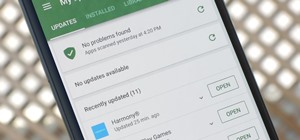
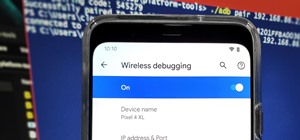
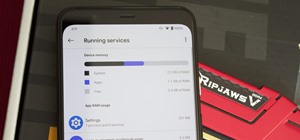



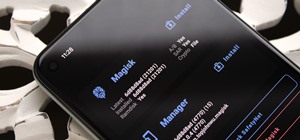
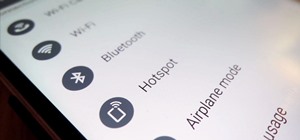
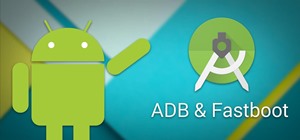
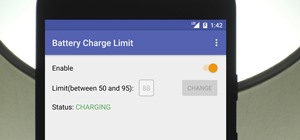

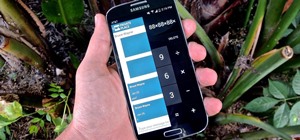

Be the First to Comment
Share Your Thoughts